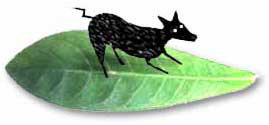

PREPARTION OF THE HERBAL MEDICINES
1. Decoction
(De) - boil plant parts in water, 15-20
min (from time of boiling), or until water volume is halved, strain,
and cool.
2. Infusion (In) - pour hot or cold water into plant material
and allow to stand while tightly covered, stand for 5-15 min if
hot, 12-24 hrs if cold, then filter
3. Powder (Pw) - pound and grind the dried plant materials
and sift to get required particle size (coarse, intermediate or
fine)
4. Juice (J) - pound fresh plant materials and filter through
a fine piece of cloth, or may just squeeze the plant parts to
extract the juice
5. Poultice or Paste (Pt) - grind the plant material (dried or fresh)
with a little oil, water, molasses or honey, then may or may not
be spread on a square of warm cloth or banana trunk, and applied
to the skin
6. Bolus (B) - pound plant materials and add sufficient
binding agent (honey or molasses) and rolled into a ball
7. Tincture (T) - botanical extracts made with alcohol; 1 part
herb:5 parts distilled spirits and infused for 6 weeks; residue
can be used to prepare ointments.
APPLICATION OF THE HERBAL MEDICINES
Oral
1. Drenching (Dr) - administration of liquid or semi-liquid
preparation through the mouth; may use bamboo tube, soft drink
bottle, syringe sans needle, or medicine dropper.
2. Force feeding (Ff) - application of solid preparation through
the mouth.
Topical
3. Fomentation (Fo)- warm, moist substance (wet cloth) applied
to affected parts of the body.
4. Compress (C)- dry substance applied to affected parts of
the body.
5. Smudge (S)- direct application of herbal preparation on
affected parts of the body.
